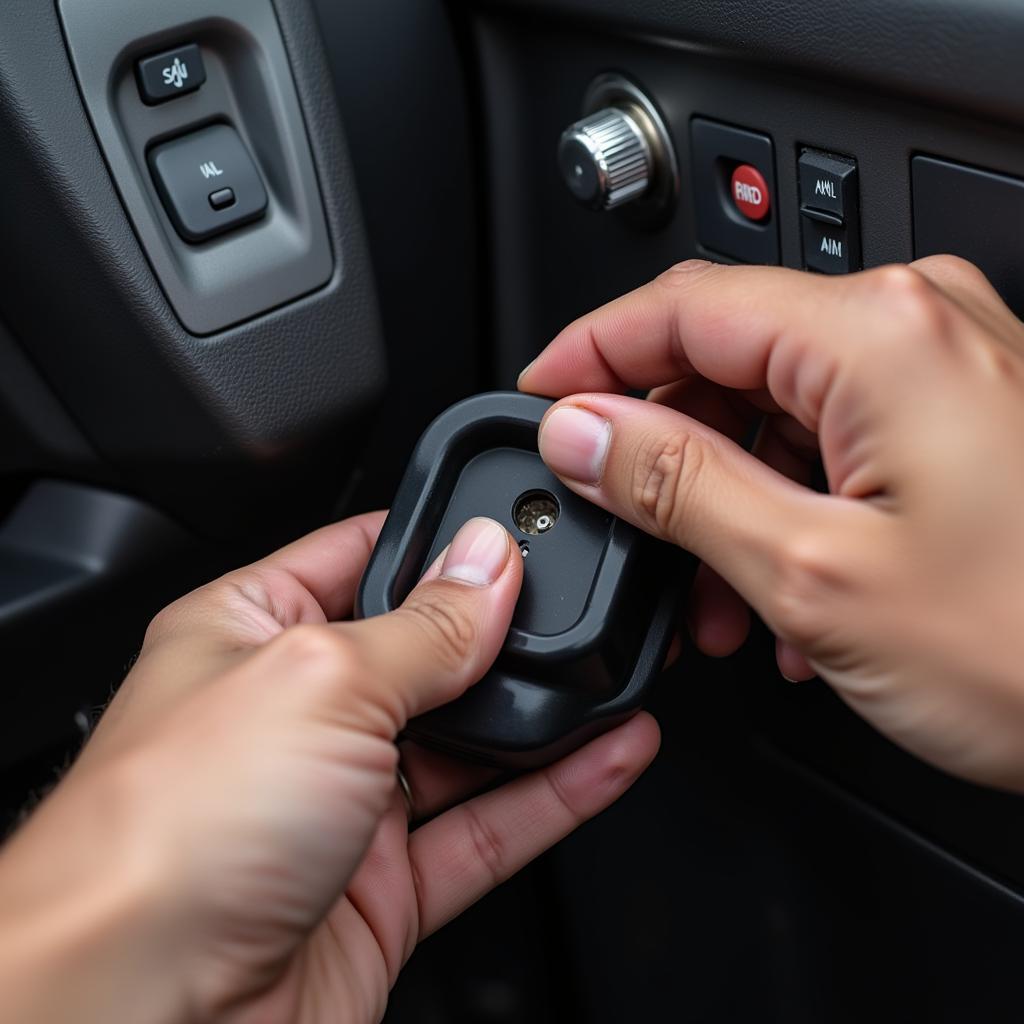A persistent “Parking Brake Not Set” warning on your 2020 Freightliner can be a frustrating experience. This warning, often accompanied by an annoying chime, usually indicates a fault in the parking brake system. While it might seem like a minor inconvenience, ignoring this warning can have serious safety implications. This guide delves into the common causes of this warning in 2020 Freightliner models and provides practical solutions to help you resolve the issue.
Understanding Your Freightliner Parking Brake System
Before we dive into troubleshooting, it’s crucial to understand how your Freightliner’s parking brake system works. Unlike traditional parking brakes that use cables connected to the rear wheels, most modern Freightliners employ an air-operated system integrated with the main air brake system.
Here’s a simplified breakdown:
- Air Compressor: Generates compressed air for the entire brake system.
- Air Dryer: Removes moisture from the compressed air, preventing corrosion and freezing.
- Parking Brake Valve: Controls the flow of air to the parking brake chambers.
- Parking Brake Chambers: Located at each wheel, these chambers use air pressure to engage and disengage the parking brakes.
- Parking Brake Switch: Activates the parking brake valve, typically located on the dashboard.
- Sensors: Monitor various parameters within the system and send signals to the Electronic Control Unit (ECU).
Common Causes of the “Parking Brake Not Set” Warning
The “Parking Brake Not Set” warning in your 2020 Freightliner is triggered when the ECU detects an issue within the parking brake system. This could be due to a variety of reasons, including:
1. Low Air Pressure
One of the most common causes of this warning is low air pressure in the system. If the air pressure drops below a certain threshold, the ECU will trigger the warning to alert you. This can happen due to:
- Air Leaks: Leaks in the air lines, fittings, or chambers can cause a drop in air pressure.
- Faulty Air Compressor: A malfunctioning air compressor won’t be able to generate sufficient air pressure.
- Clogged Air Dryer: A clogged air dryer restricts airflow, leading to low pressure.
2. Parking Brake Switch Malfunction
The parking brake switch is responsible for sending a signal to the ECU to engage or disengage the parking brakes. If the switch is faulty, it may not send the correct signal, leading to the warning.
3. Faulty Parking Brake Valve
The parking brake valve controls the flow of air to the parking brake chambers. A malfunctioning valve may not allow air to reach the chambers, preventing the parking brakes from engaging properly.
4. Worn or Damaged Parking Brake Components
Over time, the components of the parking brake system, such as the chambers, springs, or pushrods, can wear out or become damaged. This can prevent the parking brakes from engaging fully, triggering the warning.
5. Electrical Issues
The parking brake system relies on various sensors and electrical connections to function correctly. Loose connections, damaged wiring, or faulty sensors can disrupt the system’s operation and trigger the warning light.
Troubleshooting the “Parking Brake Not Set” Warning
Now that you have a better understanding of the potential causes, let’s explore some troubleshooting steps:
1. Check the Air Pressure Gauge
The first step is to check the air pressure gauge on your dashboard. Ensure the pressure is within the manufacturer’s specified range. If the pressure is low, you’ll need to identify and address the source of the leak or problem with the air supply system.
2. Inspect the Parking Brake Switch
Visually inspect the parking brake switch for any signs of damage or wear. Check if the switch is operating smoothly and engaging correctly. If the switch feels loose, sticks, or fails to activate, it likely needs replacement.
 Parking Brake Switch Inspection
Parking Brake Switch Inspection
3. Listen for Air Leaks
With the engine off and the parking brake released, carefully listen for any hissing sounds around the truck, particularly near the parking brake valve and chambers. An air leak can often be identified by this distinct sound.
4. Inspect the Parking Brake Valve
Visually inspect the parking brake valve for any signs of damage or leaks. Check the connections and airlines leading to and from the valve for any signs of wear or loose fittings.
5. Examine the Parking Brake Chambers
Inspect the parking brake chambers located at each wheel. Look for any signs of physical damage, leaks, or corrosion. Check the pushrods and springs for proper operation. If you suspect a problem with the chambers, it’s best to have them inspected by a qualified technician.
6. Check for Electrical Issues
While visually inspecting the system, pay attention to the wiring harnesses and connectors related to the parking brake system. Look for any loose connections, damaged wires, or signs of corrosion. If you suspect an electrical issue, it’s recommended to consult a qualified technician for diagnosis and repair.
When to Seek Professional Help
While some causes of the “Parking Brake Not Set” warning can be addressed with basic troubleshooting, it’s essential to remember that the air brake system is critical for your safety and that of others on the road.
If you’re unable to identify or resolve the issue yourself, it’s crucial to seek professional assistance from a qualified Freightliner technician. They have the expertise, specialized tools, and diagnostic equipment to pinpoint and rectify the problem effectively.
Conclusion
Addressing the “2020 Freightliner Parking Brake Not Set” warning is not just about fixing an annoying chime; it’s about ensuring your safety and the proper functioning of a critical safety system. By understanding the common causes and following these troubleshooting steps, you can take proactive measures to address the issue. Remember, if you’re unsure about any aspect of the repair or if the problem persists, consult a qualified technician immediately.

